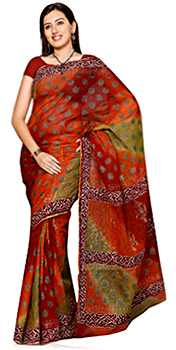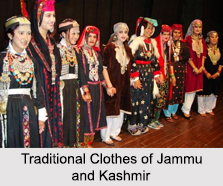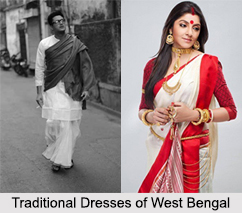 Masuriya or Kota Doria is one of the unique textiles of Rajasthan that has made the village Khaitoon famous all across the nation. Typical weaving villages in Rajasthan, like Khaitoon, Siswali, Sarnsan and Mangrol have at least one loom in each household. These looms may be simple pit looms, handlooms or powerlooms and are usually set up by the weavers themselves.
Masuriya or Kota Doria is one of the unique textiles of Rajasthan that has made the village Khaitoon famous all across the nation. Typical weaving villages in Rajasthan, like Khaitoon, Siswali, Sarnsan and Mangrol have at least one loom in each household. These looms may be simple pit looms, handlooms or powerlooms and are usually set up by the weavers themselves.
The Khaitoon village lies fifteen kilometres from Kota from which it gets its name, Kota doria. All communities in Rajasthan wear odhni, pagadi and dhoti made of masuriya textile. Light and translucent, this kind of textile was favoured by royalty for its grace. The masuriya fabric has evolved from pagadi to odhni to sari, and while the masuriya odhni and pagadi are still worn in the state, it is the Kota sari that is most popular and, hence, more commercially feasible. Reeling, dyeing, sizing, warping and finally weaving, using a jaala attachment are the typical processes that go into the creation of this beautiful fabric.
The first four steps to manufacture masuriya are for the preparation of the silk yarn, which is of two kinds. The thicker variety is made up of 80 counts whereas the finer yarn is of 120 counts. A hand-turned spindle is widely used for reeling. In earlier times, dyers living in Khaitoon who dyed the yarn, but today easily available null-dyed yarn is used widely. The yarn is refined and strengthened by the process of sizing. It is then treated with a solution made from boiled wild onions, which also adds lustre. In the warping stage the yarn is arranged on the loom in a specific length and width and pure gold and silver thread are worked into the design.
The simple pit treadle loom that are utilised by the weavers of Khaitoon is usually fitted with a crossbeam, attached with wooden pegs. These pegs lift selected warps so that extra weft can be inserted to create the beautiful designs that are characteristic of this material. In fact, the masuriya has some unique features that set it apart from other weaves. The first is the usage of very fine quality yarn. The second is its distinctive square chaukaris locally known as khat, which is fashioned by weaving. The outer check is constructed from the thicker yarn and the advanced yarn provides the inner texture. This makes the cloth, with its little protrusions, irregular and the artisan often take the pride that it is this quality that gives the cloth a better drape. Pure zari is woven into the borders and final piece for ornamentation.
Earlier, white and beige colours were preferred, but lately, the craftsmen have added variety to colour, shapes and design, in keeping with changing sartorial tastes. The motifs on Kota saris seem to have been modified or borrowed from the other textiles like the Banarasi sari. Ambi, bel, gavila, svastika, and pan are commonly used, as well as animal shapes, like the elephant and peacock. The plain check is woven in single colour or with a multicolored warp and weft. This may be further embellished with zari work all over the sari in consonance with the self-check of the fabric in a lattice effect. The extra weft may be of silk yarn or zari. Sometimes, tie and dye and other printed designs may also be included.
Previously, the masuriya fabric was woven from cotton fibre but in the past few decades, silk yarn has been introduced into the weave. This new cotton-silk blend is also known as masuriya. Today, pure silk masuriya saris are produced in Rajasthan and are extremely popular for their gossamer quality in the region.





















